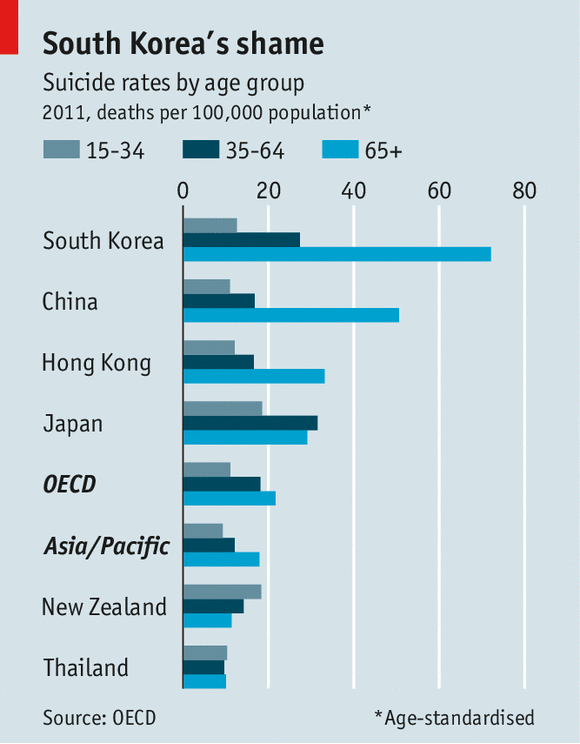Joe Hockey has called for an “end to the age of entitlement”. He added on Lateline that “we need to compare ourselves with our Asian neighbours where the entitlements programs of the state are far less than they are in Australia”. He says that “the age of unlimited and unfunded entitlement to government services and income support is over”. He compares the 16% of GDP that Australia devotes to social spending with Korea’s figure of “around 10%,” which is actually 7.6% on the latest OECD figures.
It’s important to understand exactly what we buy with that 16% of GDP. When a politician talks vaguely about “middle class welfare” and a culture of entitlement, a lot of voters probably nod sagely and think of their least favourite porky perk for other people, like the baby bonus. The problem is that that isn’t where most of the money goes. Most of our social spending, nearly two thirds of it in fact, goes to health and old age assistance (which consists mainly of the aged pension).
Here’s where our public social spending goes:
Public social spending as a proportion of GDP in Australia
Source: OECD Social Expenditure Database
Hockey could eliminate all social spending other than health and old age assistance and we’d still be at 10.1% of GDP, well above Korea, a country he mentions as a benchmark. In other words, even if we scrapped all help for people with disabilities (the support pension as well as in-kind help), got rid of Newstart, stopped spending anything on helping people find work, and eliminated all housing assistance, we’d still be devoting more than our Asian neighbours to social spending. That leaves health care and old age pensions as the only place left to cut to get down to the sort of levels that Hockey identified. The safety net as we know it would be a thing of the past after cuts of that size.
The next question that arises from Hockey’s speech is whether Korea and Hong Kong are really the right countries to which we should compare ourselves. If we compare Australia to the other OECD advanced economies, it’s clear that our social spending is quite low, lower even than the United States (as a proportion of GDP).
Public social spending as a proportion of GDP in the OECD countries
A lot of people might be surprised by the fact that Australian public social spending is lower than America’s and lower than most advanced economies. Compared to America, we spend less on health (although we have longer life expectancy), and less on aged pensions (because ours is more tightly means tested).
The composition of social spending in Australia and the US
 Source: OECD Social Expenditure Database
Source: OECD Social Expenditure Database
Means testing is a big part of the reason that our social spending is so low relative to most advanced economies. We means test our payments more than any other OECD country, which means we achieve more poverty alleviation and inequality reduction per dollar spent than anywhere else. As Professor Peter Whiteford has repeatedly pointed out, “Australia actually has the lowest middle or upper class welfare in the OECD”. Professor Whiteford was good enough to send me the chart below, which shows the share of transfer payments received by the richest 50% of the working-age population, ie. middle-to-upper class welfare. The English-speaking OECD countries are in red, with Australia right at the bottom (click the chart if you want to make it bigger).







